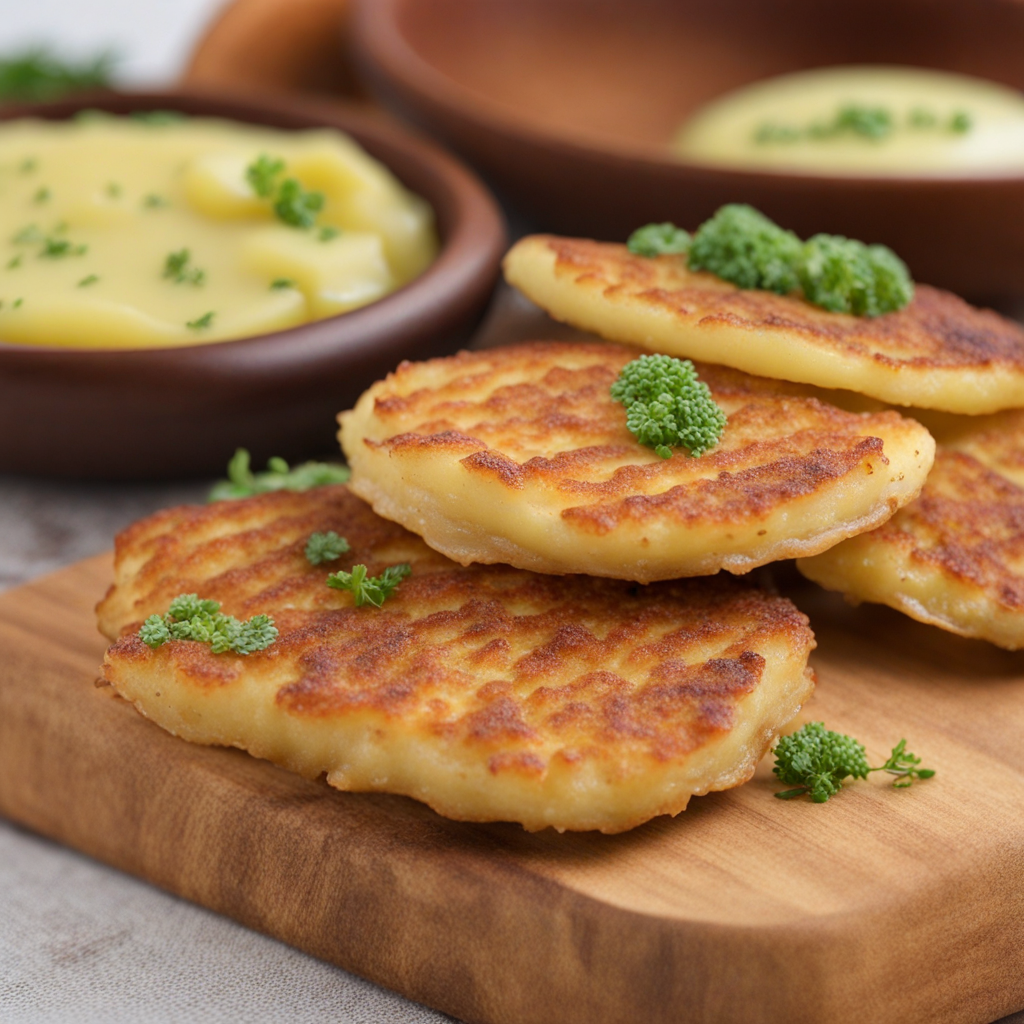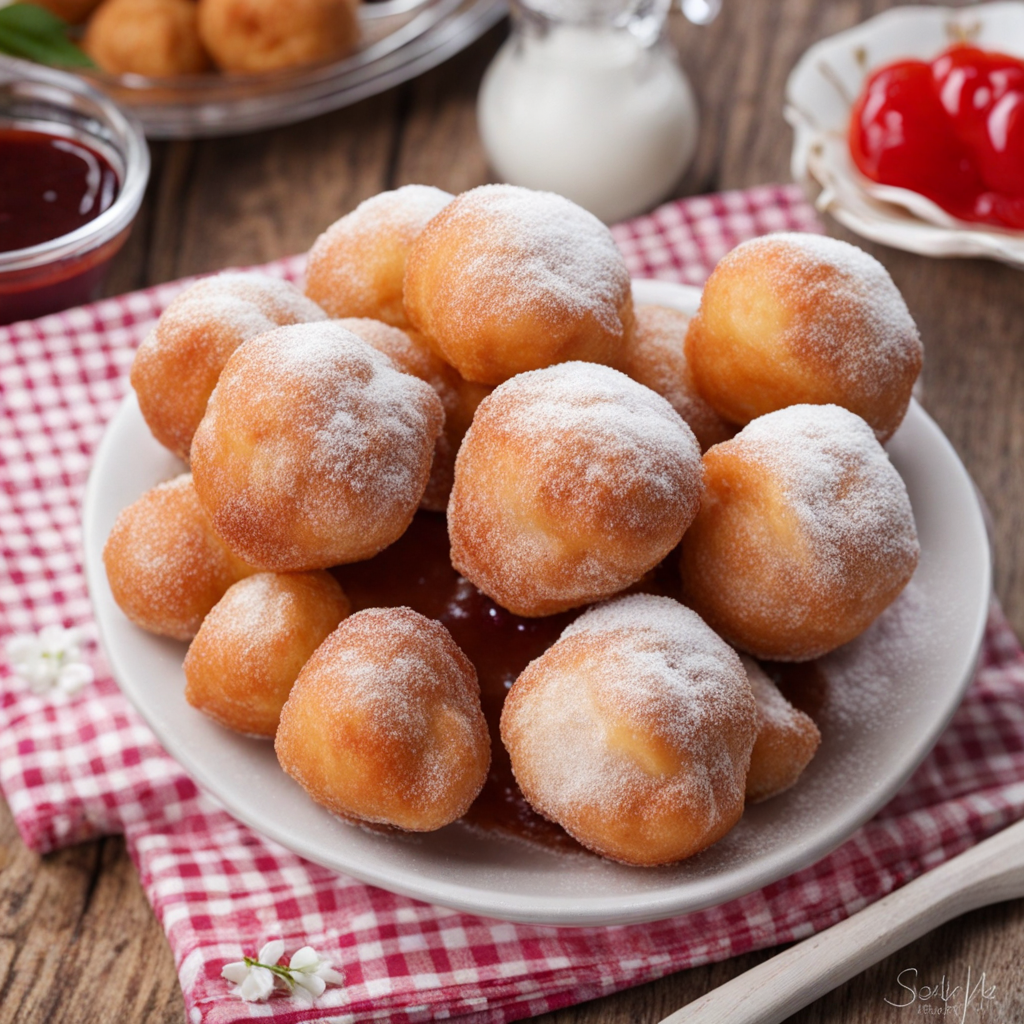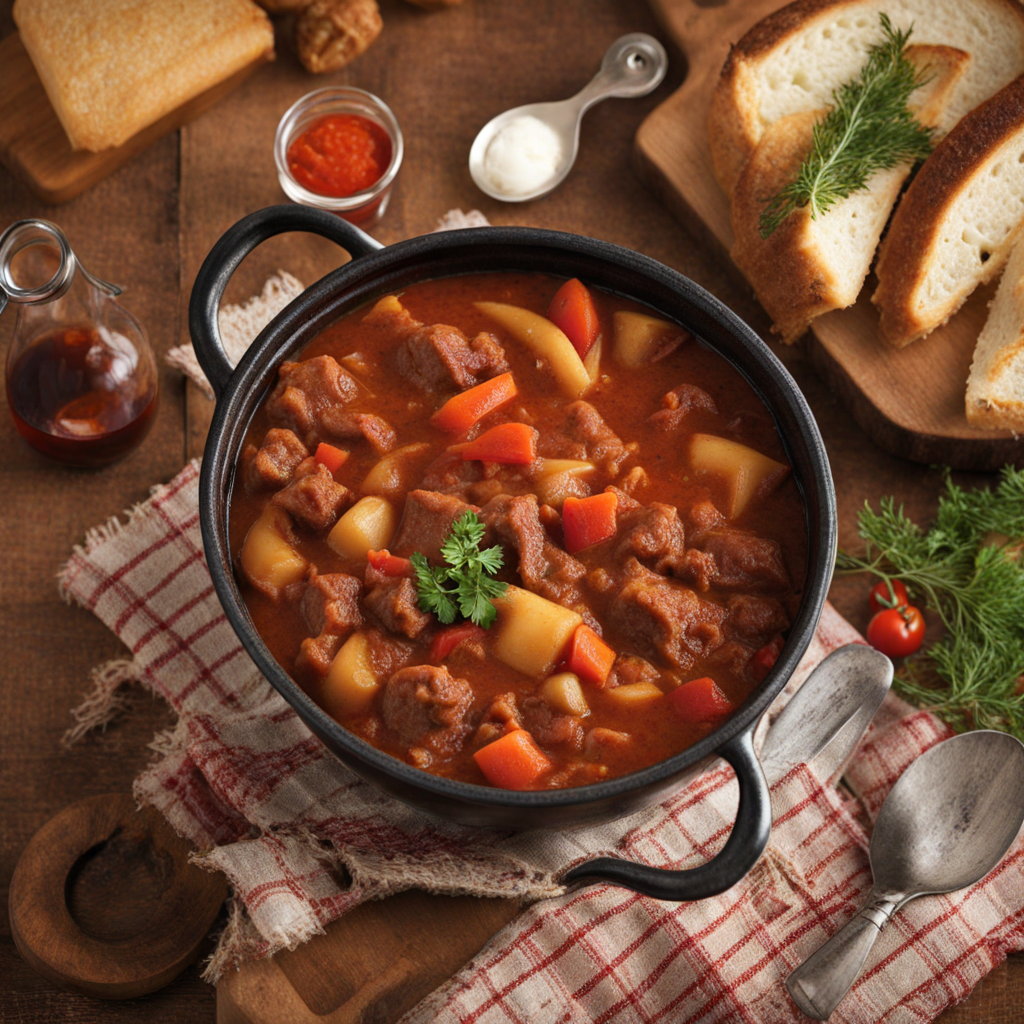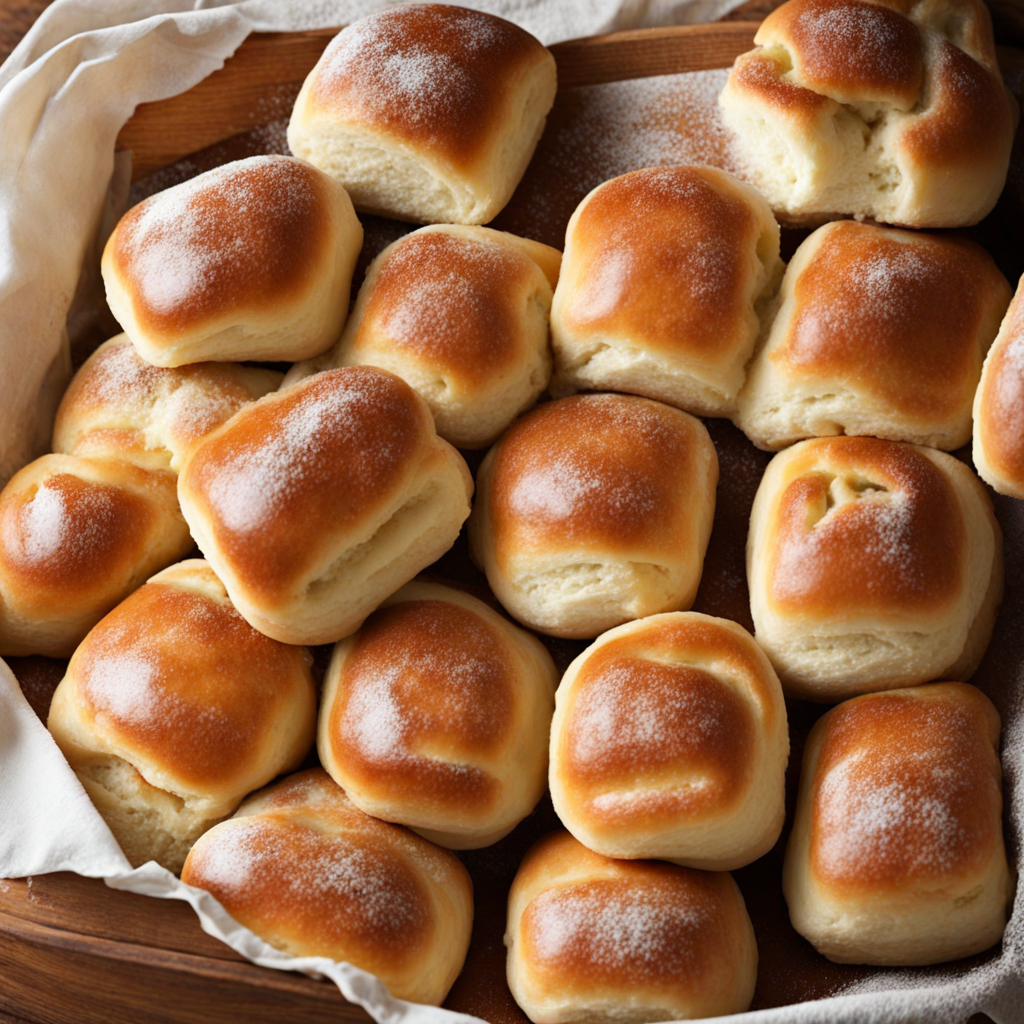Zemiakové Placky
Zemiakové Placky, or Slovak Potato Pancakes, are a delightful dish that showcases the humble potato in a wonderful way. These pancakes are traditionally made from grated potatoes, which are mixed with a few simple ingredients like flour, salt, and sometimes onions or garlic for added flavor. The mixture is then shaped into flat rounds and pan-fried until they achieve a golden-brown, crispy exterior, while remaining soft and tender inside. The texture is a beautiful contrast that makes each bite satisfying and comforting, perfect for any time of day. What sets Zemiakové Placky apart is their versatility. They can be served as a savory side dish, a snack, or even a light meal on their own. Many enjoy them topped with sour cream or applesauce, which adds a creamy or sweet touch that complements the savory flavors of the pancakes. Some variations include adding cheese or herbs to the batter, further enriching the taste experience and allowing for creativity in the kitchen. These potato pancakes are not only a staple in Slovak cuisine but also evoke a sense of nostalgia and tradition, often passed down through generations. The process of making Zemiakové Placky is a labor of love, bringing families together in the kitchen. Their rustic charm and hearty flavor make them a wonderful dish for anyone looking to explore the rich culinary culture of Slovakia, inviting you to savor the simple yet profound taste of potato in a whole new way.
How It Became This Dish
Zemiakové Placky: A Culinary Journey Through Slovak History Zemiakové placky, or potato pancakes, are a beloved staple in Slovak cuisine, symbolizing both the agricultural heritage of the region and the ingenuity of its people. With their crispy exterior and soft, flavorful interior, these pancakes have transcended their humble beginnings to become a cherished dish enjoyed across Slovakia and beyond. Origins: The Birth of Zemiakové Placky The origins of zemiakové placky can be traced back to Central and Eastern Europe, where the potato was introduced in the late 18th century. The tuber, native to the Andean region of South America, was brought to Europe by Spanish explorers in the 16th century. Initially met with skepticism, the potato gradually gained acceptance and became a staple food in many countries, including Slovakia. By the 19th century, Slovak farmers began to cultivate potatoes extensively, recognizing their adaptability to the region's climate and soil. The abundant harvests of this versatile crop allowed for the development of various potato-based dishes, with zemiakové placky emerging as a popular choice among households, particularly in rural areas. These pancakes were often made with leftover mashed potatoes, showcasing the resourcefulness of Slovak cuisine that turned simple ingredients into satisfying meals. Cultural Significance: A Dish of Tradition and Community Zemiakové placky are more than just a delicious dish; they are deeply intertwined with Slovak culture and traditions. In rural communities, these pancakes were often prepared during family gatherings or communal events, reinforcing bonds among neighbors and kin. The preparation of zemiakové placky became a social activity, where families would gather in the kitchen, share stories, and enjoy each other's company while cooking. Traditionally, zemiakové placky are made from grated raw potatoes mixed with flour, salt, and, occasionally, onions or garlic for added flavor. The mixture is then fried in oil until golden brown. The simplicity of the ingredients reflects the agrarian lifestyle of rural Slovakia, where fresh produce and basic pantry items formed the basis of daily meals. In some regions, zemiakové placky were prepared during special occasions, such as harvest festivals and holiday celebrations. They were often served alongside local dishes like kapustnica (cabbage soup) or accompanied by sour cream, apple sauce, or even a sprinkle of sugar. This versatility made them a fitting dish for various gatherings, adapting to the tastes and preferences of the community. Development Over Time: From Rustic Roots to Modern Adaptations As Slovakia underwent significant social and economic changes throughout the 20th century, so too did the preparation and consumption of zemiakové placky. The early 1900s saw the rise of industrialization, which led to urban migration as people left rural areas for jobs in cities. This shift altered traditional food practices, with many urban dwellers longing for the flavors of their homeland. Zemiakové placky became a nostalgic dish that connected people to their roots, symbolizing a simpler time. After World War II, with the establishment of a communist regime, food production and distribution were centralized. Despite the challenges of food scarcity, zemiakové placky remained a common dish, often served in school cafeterias and state-run restaurants. The recipe adapted to the availability of ingredients, sometimes using less desirable potatoes or substituting other components due to rationing. Nevertheless, the essence of zemiakové placky persisted, as families found ways to incorporate them into their diets. With the fall of communism in 1989, Slovakia experienced a culinary renaissance as chefs and home cooks alike sought to revive traditional recipes while incorporating modern techniques and flavors. Zemiakové placky were reimagined in various ways, with chefs experimenting with different herbs, spices, and toppings to elevate the dish. Today, it is not uncommon to find gourmet versions of zemiakové placky on restaurant menus, showcasing the dish's evolution from rustic comfort food to a refined culinary experience. The Contemporary Scene: Zemiakové Placky in Modern Slovakia In contemporary Slovakia, zemiakové placky remain a beloved comfort food, enjoyed by people of all ages. They can be found in homes, street food stalls, and upscale restaurants, showcasing their versatility and enduring popularity. With the rise of food tourism, zemiakové placky have also gained international recognition, inviting curious palates to explore Slovak cuisine. Culinary festivals celebrating traditional Slovak dishes often feature zemiakové placky as a highlight, where chefs showcase their unique spins on the classic recipe. From spicy versions with added chili to sweet adaptations featuring apples and cinnamon, the dish has become a canvas for culinary creativity. This adaptation not only preserves the traditional roots of zemiakové placky but also allows for innovation that reflects contemporary tastes. Moreover, the global trend towards plant-based diets has also influenced the way zemiakové placky are prepared and enjoyed. With an increasing number of people seeking vegetarian or vegan options, these potato pancakes can be easily adapted by using plant-based ingredients, ensuring that they remain accessible to a wider audience. Conclusion: A Taste of Heritage and Resilience Zemiakové placky are more than just a dish; they are a testament to the resilience and creativity of Slovak culture. Rooted in the agricultural traditions of the past, these potato pancakes have evolved over time, adapting to the changing social and economic landscape of Slovakia. They serve as a delicious reminder of the importance of community, family, and the connection to one's heritage. As Slovakia continues to embrace its culinary traditions while exploring new flavors and techniques, zemiakové placky will undoubtedly remain a cherished dish that brings people together, fostering a sense of belonging and pride in Slovak culture. Whether enjoyed at a family gathering, a festive celebration, or a trendy restaurant, these delightful pancakes encapsulate the spirit of Slovakia, inviting all to savor a bite of history.
You may like
Discover local flavors from Slovakia







